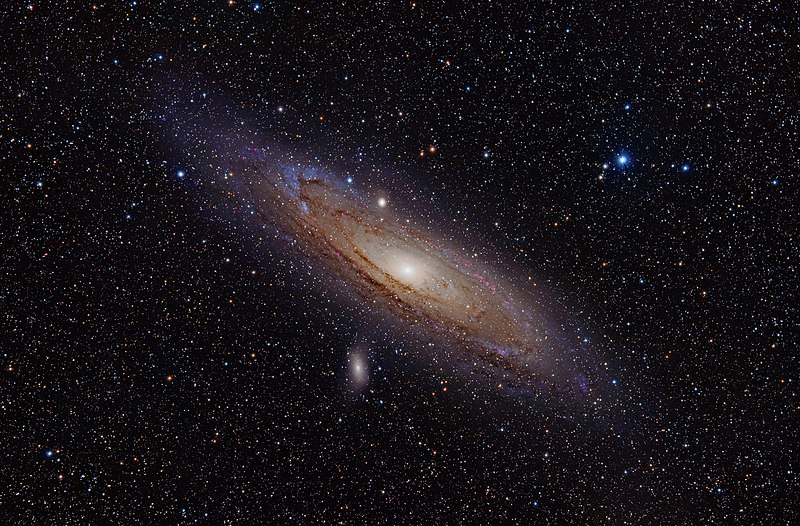Há 87 anos Edwin Hubble disse ao mundo que o Universo era gigantesco
The 100-inch (2.5 m) Hooker telescope at Mount Wilson Observatory that Hubble used to measure galaxy distances and a value for the rate of expansion of the universe.
Edwin Hubble's arrival at Mount Wilson, California, in 1919 coincided roughly with the completion of the 100-inch (2.5 m) Hooker Telescope, then the world's largest telescope. At that time, the prevailing view of the cosmos was that the universe consisted entirely of the Milky Way Galaxy. Using the Hooker Telescope at Mt. Wilson, Hubble identified Cepheid variables (a kind of star; see also standard candle) in several spiral nebulae, including the Andromeda Nebula and Triangulum. His observations, made in 1922–1923, proved conclusively that these nebulae were much too distant to be part of the Milky Way and were, in fact, entire galaxies outside our own. This idea had been opposed by many in the astronomy establishment of the time, in particular by the Harvard University-based Harlow Shapley. Despite the opposition, Hubble, then a thirty-five year old scientist, had his findings first published in The New York Times on November 23, 1924, and then more formally presented in the form of a paper at the January 1, 1925 meeting of the American Astronomical Society. Hubble's findings fundamentally changed the scientific view of the universe.
The Andromeda Galaxy
in Wikipédia



0 Comments:
Enviar um comentário
<< Home